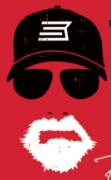A few thoughts on visual processing and splits, but first, @
Gio congratulations on the excellent finish at Nats.
Bill Rogers addresses this in the context of falling and disappearing plates at the Rogers School. He says, short of someone firing in frustration, almost never does a Rogers School attendee fire at a plate after it disappears. Given that the plates disappear on every stage, that speaks to the mind's ability to quickly process information faster than .25.
Steve Anderson did a recent podcast with Joey Sauerland on the iron sight/LO Nats. Anderson noted that on day one, he didn't observe a single split faster than .30. Sauerland discussed how when he was an A shooter, he thought the idea was to run real fast and shoot real fast splits. Looks great in video. Once he became a better shooter moving efficiently and arriving with the gun ready to shoot, and shooting consistent accurate shots is where the money is. Joey commented, not in jest, that you should figure out what your splits are to shoot A's at 25 yards, and that is the speed you should be splitting in a match.
Ironically, Sauerland lost first place on one stage on day two, the Bill drill stage. Here is a link to the results from that stage, a six shot Bill drill:
https://practiscore.com/results/new/220816?q_result=5
Last year, Lockwood shot 1.20 something to win in a side match, with a bunch of attempts. The fastest time out of all the shooters in the match was 1.73 and Lockwood was 1.98. For guys trying to win a match, big difference between stunting, or shooting on your home range with the camera, as opposed to one attempt that counts.
Whether competing, or shooting elk in the field, it seems like linking your trigger press to your vision, and delivering hits on target is priority one.



 Reply With Quote
Reply With Quote




